Mastering the Basics of Writing Background of the Study
Table of contents
- 1 Purpose of the Research Paper Background
- 2.1 Starting with Preliminary Research for Broad Context
- 2.2.1 Chronological
- 2.2.2 Thematical
- 2.2.3 Methodological
- 2.3 Link to Your Research Question
- 2.4 Avoid Plagiarism and Ensuring Proper Citation
- 2.5 Using Clear, Academic Language
- 2.6 Don’t Overload with Excessive Details
- 2.7 Review Relevant Literature
- 2.8 Identify Gaps or Contradiction
- 2.9 Keep Your Target Audience in Mind
- 2.10 Stay Objective
- 2.11 Mention Methodologies, Scope, and Limitations
- 3 Bottom Line
- 4.1 How long should background information be?
- 4.2 What is the difference between background of the study and problem statement?
- 4.3 Why is background research important to the research process?
Writing a research paper can be a juggling act, especially for those with little experience. There are so many elements to consider, and you need to cover all the bases if you want your paper to elevate your academic standings.
The background in research paper is where you lay out the topic, the gaps in the literature that this study seeks to fill, and your study’s general and unique contributions. Thus, developing the research paper background section is crucial to give a general overview of the study.
That’s why we’ve decided to give you some pointers, including:
- The purpose of the background of the study;
- Collecting and organizing background information;
- Linking the background to your present study;
- Using proper citation and wording, retaining objectivity.

Purpose of the Research Paper Background
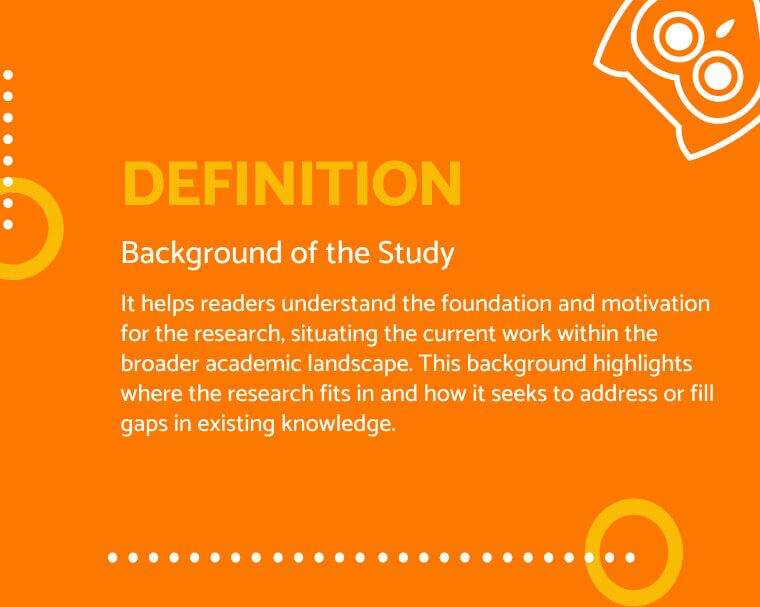
When you write a research background of the study, you explain the rationale and foundation for doing the research. It’s quite different from the research paper introduction section or a literature review. Here, you explore the history, nature, and scope of your research problem. Once you determine how previous studies have covered the problem, you can pinpoint the remaining gaps, discuss their importance, and how your study can fill them.
Essentially, it’s the foundation of your entire study. It determines the structure of your paper, highlights a well-defined research problem, and helps the reader determine your research’s unique and general contributions. Besides serving as a clear roadmap, a well-written background of the study must help the reader understand the value and purpose of your research.
How to Write a Background of the Study
Any researcher needs to understand the steps that go into writing an effective background of the study. Since you don’t have clarity in the early stages, you need to collect more information via preliminary research. Then, you should organize your information in a structure that can seamlessly lead up to your research paper in a way that shows the significance of your study.
So, if you’re wondering what is background of the study in research and how to compose it, here are some tips.
Starting with Preliminary Research for Broad Context
Before delving into writing the background of a research paper, you need a comprehensive review of the most important articles and reports on the subject in a literature review to acquire some introductory background information. Basically, you need to collect as much research data as possible.
To start with the background of an article, look for prior studies that address your issue statement in detail. Refer to reputable resources, such as academic databases and publications, and use their bibliography and literature review section to find new sources. This lets you discover new authors treating your research topic.
Finally, keep note of each piece of material you find if you decide to include it in your thesis. It helps you avoid or at least reduce plagiarism in research when you integrate those sources into your work.
Organize the Information
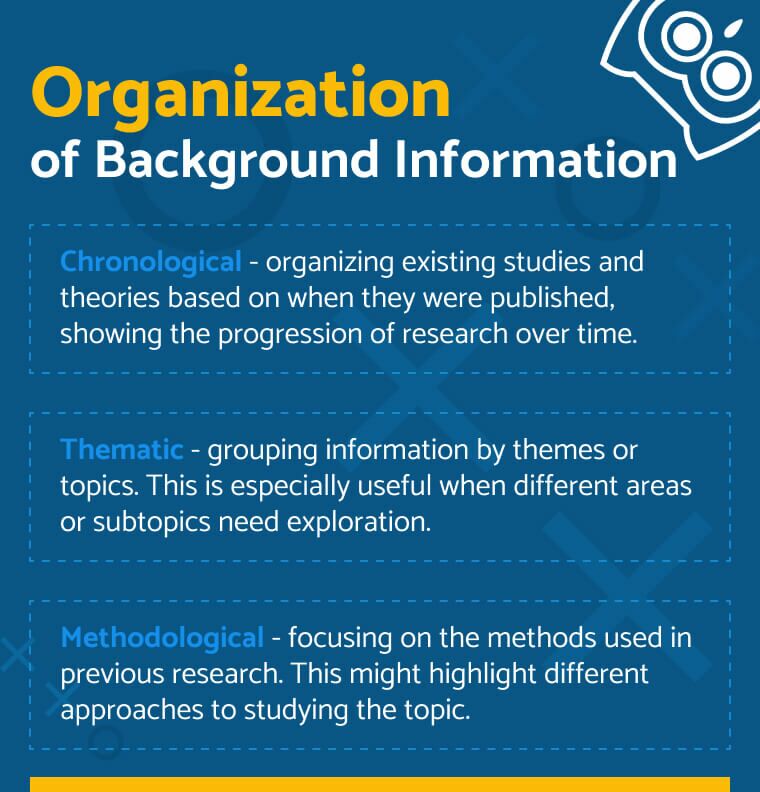
Now it’s time to discuss a vital writing tip: background information categorization. Most researchers use one of the three approaches: chronological, thematic, or methodological.
Chronological
Here, the study background and contextual information are organized in a chronological structure. As such, the reader can understand how you arrived at your conclusions about the development and the next steps you want to take in your research.
It can also be based on a trend. This method should be used only if you’re sure that the trends build logically upon one another and trace back in time. Overall, you must:
- Highlight only the most crucial background information in research
- Only use facts that can be objectively confirmed
- Find gaps in previous studies
- Give your opinion
When the background of a research paper is thematic, it is structured around the topics comprising your research problem. Start by identifying the main and secondary themes. Then, create hierarchies based on their importance or how they’re related to each other.
In other words, it requires structuring the basic background information into paragraphs that highlight themes and identify patterns in the research topic.
Separate each paragraph with a topic sentence, and ensure that each sentence effectively synthesizes background information from many sources. You can also use the famous inverted pyramid method to go from a general overview to the specifics. Overall, this method gives an overview of all topics and themes of your research subject.
Methodological
This approach for writing background of study in research focuses on the methodology in research paper rather than specific topics or the chronological order. It draws attention to the differences and similarities across research methods and offers alternative insights into the subject.
If you cover a topic where there are many relevant models or theories, it is helpful to highlight the most popular ones. In this manner, you can get a basic understanding of the most common perspectives on your subject by categorizing the paper according to the theoretical framework.
Link to Your Research Question
Be specific about the knowledge gap your research study intends to fill and show how this inspired your research questions or theories. This will help place your study in the context of the larger academic discussion while also highlighting its unique contribution.
Avoid talking about irrelevant topics, and focus on what is most important regarding your subject. In other words, every step or theme you discuss should disclose the problems and explain why you deem it important to solve them.
Avoid Plagiarism and Ensuring Proper Citation
Plagiarism is one of the main reasons for writers to seek professional help with research paper writing. To avoid accusations of plagiarism, it is important to properly credit the ideas, models, and conclusions of others. Accurately citing your sources helps maintain academic honesty and gives readers easy access to further basic research papers.
The citation style you use may be determined by the guidelines of the publication or the institution you’re affiliated with. There are plenty of online resources, including guidelines and generators, that help you adhere to the given requirements.
Using Clear, Academic Language
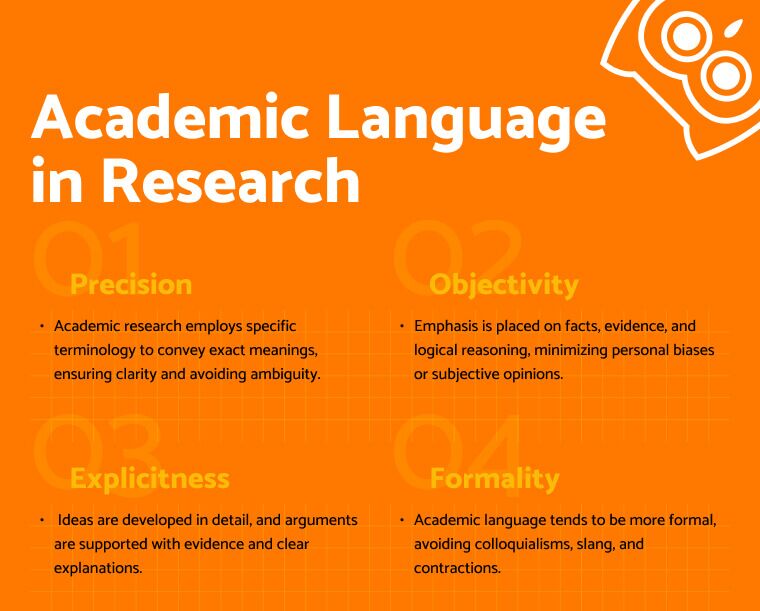
An effective background should clearly highlight the research problem and how you plan to address it. This can only be achieved by using the correct terminology while keeping the text clear and understandable. Thus, use technical phrases with caution and provide essential context and definitions for any unfamiliar term.
Make sure that even readers who aren’t familiar with your field can understand the rationale and hypothesis in study papers. Your study will be more accessible and appealing if you do this.
Don’t Overload with Excessive Details
Keep your writing simple and to the point. Although providing sufficient background information helps simplify your study, you should avoid using too many words. Going too deeply into the evidence that inspired your research problem might just confuse your readers.
In other words, it is not necessary to describe every step or every point of relevant research studies. In the background section, only discuss the important details and results that led you to formulate your research question.
Review Relevant Literature
Only by knowing and understanding what has been said and discovered before you can hope to give your contribution. When reviewing relevant research literature, you should provide a concise summary of previous studies and other works that have laid the groundwork for your own. Ensuring the material you use comes from credible sources in research is key. Also, remember to explore all nuances that could help with your research topic.
Identify Gaps or Contradiction
Normally, research objectives are based on the gaps and contradictions found in analyzing the literature review and previous research. Failing to do so might create a redundant or meaningless paper. That’s why, in the background section, you must clarify the reasoning behind how you unveiled the problems you seek to solve. You should also detail the methods to test and quantify your study hypothesis and how your findings will add to what’s already known.
Note that you’re also likely to leave a research gap or have some contradictions in your study. Don’t forget to recognize and inform your readers about them. It shows professionalism and enhances your credibility.
Keep Your Target Audience in Mind
It’s crucial to tailor the background of the study to your audience. Whether for an assignment or an academic publishing, you must write in a way that makes your message come across. So, if you know that the paper is going to be read by experts in the field, it’s ok to use a more technical and complex vocabulary.
Conversely, if the audience is more general, consider their scholarly background, avoid jargon, provide contextual information and explain concepts in a simple way.
Stay Objective
Retaining objectivity is one of the defining key components for all academic essay writers . However, having a personal interest or predisposition for a certain point of view might make it difficult to avoid bias and retain impartiality. Using a wide range of sources that address various topics, viewpoints, and research methods is crucial for maintaining objectivity both in the background and literature review section.
Mention Methodologies, Scope, and Limitations
Scientific research demands appropriate and proven methodologies. That’s why it’s important to clarify which ones you used, why and how they fit in the context of your research. The explanation should include the methodology for data collection and analysis, models, and the tools used.
The reasoning must be linked with the scope of your research. This must be clearly stated and intertwined with methods and context.
Finally, identify and discuss the shortcomings of your study background. It demonstrates that you’ve given careful thought to the study’s limits and have a firm grasp of the subject at hand. Researchers and reviewers will respect you more if you are upfront about the limits of your research methodology and go into depth about them rather than pretending they don’t exist.
Bottom Line
The first stage in writing a great research paper is to provide an intriguing background for the study. Its purpose is to explain the bigger picture, stress the importance of your study, and lay out the key issues you chose to study. Don’t forget that the background section of research paper writing isn’t a literature review. It discusses the reasons behind your study, points out any gaps in existing works, and explains how you would help fill those gaps.
All this should have taught you how to write a background for a research paper. But don’t forget that knowing the theory is only the first step. Whenever you feel stuck, don’t be shy to ask for guidance and rely on the help of experts.
How long should background information be?
What is the difference between background of the study and problem statement, why is background research important to the research process, readers also enjoyed.

WHY WAIT? PLACE AN ORDER RIGHT NOW!
Just fill out the form, press the button, and have no worries!
We use cookies to give you the best experience possible. By continuing we’ll assume you board with our cookie policy.

What Is Background in a Research Paper?
So you have carefully written your research paper and probably ran it through your colleagues ten to fifteen times. While there are many elements to a good research article, one of the most important elements for your readers is the background of your study.
What is Background of the Study in Research
The background of your study will provide context to the information discussed throughout the research paper . Background information may include both important and relevant studies. This is particularly important if a study either supports or refutes your thesis.
Why is Background of the Study Necessary in Research?
The background of the study discusses your problem statement, rationale, and research questions. It links introduction to your research topic and ensures a logical flow of ideas. Thus, it helps readers understand your reasons for conducting the study.
Providing Background Information
The reader should be able to understand your topic and its importance. The length and detail of your background also depend on the degree to which you need to demonstrate your understanding of the topic. Paying close attention to the following questions will help you in writing background information:
- Are there any theories, concepts, terms, and ideas that may be unfamiliar to the target audience and will require you to provide any additional explanation?
- Any historical data that need to be shared in order to provide context on why the current issue emerged?
- Are there any concepts that may have been borrowed from other disciplines that may be unfamiliar to the reader and need an explanation?
Related: Ready with the background and searching for more information on journal ranking? Check this infographic on the SCImago Journal Rank today!
Is the research study unique for which additional explanation is needed? For instance, you may have used a completely new method
How to Write a Background of the Study
The structure of a background study in a research paper generally follows a logical sequence to provide context, justification, and an understanding of the research problem. It includes an introduction, general background, literature review , rationale , objectives, scope and limitations , significance of the study and the research hypothesis . Following the structure can provide a comprehensive and well-organized background for your research.
Here are the steps to effectively write a background of the study.
1. Identify Your Audience:
Determine the level of expertise of your target audience. Tailor the depth and complexity of your background information accordingly.
2. Understand the Research Problem:
Define the research problem or question your study aims to address. Identify the significance of the problem within the broader context of the field.

3. Review Existing Literature:
Conduct a thorough literature review to understand what is already known in the area. Summarize key findings, theories, and concepts relevant to your research.
4. Include Historical Data:
Integrate historical data if relevant to the research, as current issues often trace back to historical events.
5. Identify Controversies and Gaps:
Note any controversies or debates within the existing literature. Identify gaps , limitations, or unanswered questions that your research can address.
6. Select Key Components:
Choose the most critical elements to include in the background based on their relevance to your research problem. Prioritize information that helps build a strong foundation for your study.
7. Craft a Logical Flow:
Organize the background information in a logical sequence. Start with general context, move to specific theories and concepts, and then focus on the specific problem.
8. Highlight the Novelty of Your Research:
Clearly explain the unique aspects or contributions of your study. Emphasize why your research is different from or builds upon existing work.
Here are some extra tips to increase the quality of your research background:
Example of a Research Background
Here is an example of a research background to help you understand better.
The above hypothetical example provides a research background, addresses the gap and highlights the potential outcome of the study; thereby aiding a better understanding of the proposed research.
What Makes the Introduction Different from the Background?
Your introduction is different from your background in a number of ways.
- The introduction contains preliminary data about your topic that the reader will most likely read , whereas the background clarifies the importance of the paper.
- The background of your study discusses in depth about the topic, whereas the introduction only gives an overview.
- The introduction should end with your research questions, aims, and objectives, whereas your background should not (except in some cases where your background is integrated into your introduction). For instance, the C.A.R.S. ( Creating a Research Space ) model, created by John Swales is based on his analysis of journal articles. This model attempts to explain and describe the organizational pattern of writing the introduction in social sciences.
Points to Note
Your background should begin with defining a topic and audience. It is important that you identify which topic you need to review and what your audience already knows about the topic. You should proceed by searching and researching the relevant literature. In this case, it is advisable to keep track of the search terms you used and the articles that you downloaded. It is helpful to use one of the research paper management systems such as Papers, Mendeley, Evernote, or Sente. Next, it is helpful to take notes while reading. Be careful when copying quotes verbatim and make sure to put them in quotation marks and cite the sources. In addition, you should keep your background focused but balanced enough so that it is relevant to a broader audience. Aside from these, your background should be critical, consistent, and logically structured.
Writing the background of your study should not be an overly daunting task. Many guides that can help you organize your thoughts as you write the background. The background of the study is the key to introduce your audience to your research topic and should be done with strong knowledge and thoughtful writing.
The background of a research paper typically ranges from one to two paragraphs, summarizing the relevant literature and context of the study. It should be concise, providing enough information to contextualize the research problem and justify the need for the study. Journal instructions about any word count limits should be kept in mind while deciding on the length of the final content.
The background of a research paper provides the context and relevant literature to understand the research problem, while the introduction also introduces the specific research topic, states the research objectives, and outlines the scope of the study. The background focuses on the broader context, whereas the introduction focuses on the specific research project and its objectives.
When writing the background for a study, start by providing a brief overview of the research topic and its significance in the field. Then, highlight the gaps in existing knowledge or unresolved issues that the study aims to address. Finally, summarize the key findings from relevant literature to establish the context and rationale for conducting the research, emphasizing the need and importance of the study within the broader academic landscape.
The background in a research paper is crucial as it sets the stage for the study by providing essential context and rationale. It helps readers understand the significance of the research problem and its relevance in the broader field. By presenting relevant literature and highlighting gaps, the background justifies the need for the study, building a strong foundation for the research and enhancing its credibility.
The presentation very informative
It is really educative. I love the workshop. It really motivated me into writing my first paper for publication.
an interesting clue here, thanks.
thanks for the answers.
Good and interesting explanation. Thanks
Thank you for good presentation.
Hi Adam, we are glad to know that you found our article beneficial
The background of the study is the key to introduce your audience to YOUR research topic.
Awesome. Exactly what i was looking forwards to 😉
Hi Maryam, we are glad to know that you found our resource useful.
my understanding of ‘Background of study’ has been elevated.
Hi Peter, we are glad to know that our article has helped you get a better understanding of the background in a research paper.
thanks to give advanced information
Hi Shimelis, we are glad to know that you found the information in our article beneficial.
When i was studying it is very much hard for me to conduct a research study and know the background because my teacher in practical research is having a research so i make it now so that i will done my research
Very informative……….Thank you.
The confusion i had before, regarding an introduction and background to a research work is now a thing of the past. Thank you so much.
Thanks for your help…
Thanks for your kind information about the background of a research paper.
Thanks for the answer
Very informative. I liked even more when the difference between background and introduction was given. I am looking forward to learning more from this site. I am in Botswana
Hello, I am Benoît from Central African Republic. Right now I am writing down my research paper in order to get my master degree in British Literature. Thank you very much for posting all this information about the background of the study. I really appreciate. Thanks!
The write up is quite good, detailed and informative. Thanks a lot. The article has certainly enhanced my understanding of the topic.
It’s good and formative which help me to get more understanding on writing background of the study.
Rate this article Cancel Reply
Your email address will not be published.

Enago Academy's Most Popular Articles

- AI in Academia
- Infographic
- Manuscripts & Grants
- Reporting Research
- Trending Now
Can AI Tools Prepare a Research Manuscript From Scratch? — A comprehensive guide
As technology continues to advance, the question of whether artificial intelligence (AI) tools can prepare…

Abstract Vs. Introduction — Do you know the difference?
Ross wants to publish his research. Feeling positive about his research outcomes, he begins to…

- Old Webinars
- Webinar Mobile App
Demystifying Research Methodology With Field Experts
Choosing research methodology Research design and methodology Evidence-based research approach How RAxter can assist researchers

- Manuscript Preparation
- Publishing Research
How to Choose Best Research Methodology for Your Study
Successful research conduction requires proper planning and execution. While there are multiple reasons and aspects…

Top 5 Key Differences Between Methods and Methodology
While burning the midnight oil during literature review, most researchers do not realize that the…
How to Draft the Acknowledgment Section of a Manuscript
Discussion Vs. Conclusion: Know the Difference Before Drafting Manuscripts

Sign-up to read more
Subscribe for free to get unrestricted access to all our resources on research writing and academic publishing including:
- 2000+ blog articles
- 50+ Webinars
- 10+ Expert podcasts
- 50+ Infographics
- 10+ Checklists
- Research Guides
We hate spam too. We promise to protect your privacy and never spam you.
- Industry News
- Promoting Research
- Career Corner
- Diversity and Inclusion
- Infographics
- Expert Video Library
- Other Resources
- Enago Learn
- Upcoming & On-Demand Webinars
- Open Access Week 2024
- Peer Review Week 2024
- Publication Integrity Week 2024
- Conference Videos
- Enago Report
- Journal Finder
- Enago Plagiarism & AI Grammar Check
- Editing Services
- Publication Support Services
- Research Impact
- Translation Services
- Publication solutions
- AI-Based Solutions
- Thought Leadership
- Call for Articles
- Call for Speakers
- Author Training
- Edit Profile
I am looking for Editing/ Proofreading services for my manuscript Tentative date of next journal submission:

Which among these would you prefer the most for improving research integrity?
- Entertainment
- Environment
- Information Science and Technology
- Social Issues
Home Essay Samples Life Writing Experience
Understanding the Background in an Essay: Context and Significance
Table of contents, defining the background, the importance of context, establishing relevance, creating engagement, conclusion: framing the narrative.
- Smith, John. "The Art of Effective Background Writing." Journal of Academic Writing, vol. 25, no. 2, 2018, pp. 87-104.
- Jones, Emily. "Context Matters: The Role of Background Information in Comprehension." Reading Research Quarterly, vol. 41, no. 3, 2006, pp. 386-401.
- Johnson, Robert. "Crafting Engaging Backgrounds: Techniques for Captivating Readers." Writing Techniques Quarterly, vol. 18, no. 4, 2020, pp. 55-67.
- Thompson, Laura. "The Significance of Context in Essay Writing." Academic Insights, vol. 12, no. 1, 2019, pp. 23-38.
- Williams, David. "The Power of Relevance: Creating Lasting Impressions Through Effective Backgrounds." Rhetoric and Composition Journal, vol. 30, no. 2, 2015, pp. 120-135.
*minimum deadline
Cite this Essay
To export a reference to this article please select a referencing style below

- Bucket List
- Personality
- Stock Market
Related Essays
Need writing help?
You can always rely on us no matter what type of paper you need
*No hidden charges
100% Unique Essays
Absolutely Confidential
Money Back Guarantee
By clicking “Send Essay”, you agree to our Terms of service and Privacy statement. We will occasionally send you account related emails
You can also get a UNIQUE essay on this or any other topic
Thank you! We’ll contact you as soon as possible.
- If you are writing in a new discipline, you should always make sure to ask about conventions and expectations for introductions, just as you would for any other aspect of the essay. For example, while it may be acceptable to write a two-paragraph (or longer) introduction for your papers in some courses, instructors in other disciplines, such as those in some Government courses, may expect a shorter introduction that includes a preview of the argument that will follow.
- In some disciplines (Government, Economics, and others), it’s common to offer an overview in the introduction of what points you will make in your essay. In other disciplines, you will not be expected to provide this overview in your introduction.
- Avoid writing a very general opening sentence. While it may be true that “Since the dawn of time, people have been telling love stories,” it won’t help you explain what’s interesting about your topic.
- Avoid writing a “funnel” introduction in which you begin with a very broad statement about a topic and move to a narrow statement about that topic. Broad generalizations about a topic will not add to your readers’ understanding of your specific essay topic.
- Avoid beginning with a dictionary definition of a term or concept you will be writing about. If the concept is complicated or unfamiliar to your readers, you will need to define it in detail later in your essay. If it’s not complicated, you can assume your readers already know the definition.
- Avoid offering too much detail in your introduction that a reader could better understand later in the paper.
- picture_as_pdf Introductions
- Have your assignments done by seasoned writers. 24/7
- Contact us:
- +1 (213) 221-0069
- [email protected]

What is a Background in an Essay: Introducing Information

Writing A Background in an Essay
Background in an essay refers to material provided in a nonfiction essay. It can also be defined as work that explains the context of the issue you will explore in the essay.
This information is connected to the hook or opening statement, and then to the thesis statement, which you will write last at the end of the introduction.

People Also Read: Write an Essay on Someone Who Inspires You: Parent or Famous
What is Background Information in an Essay
The background information is the supporting points you employ to demonstrate your argument or viewpoint. It is the grounds on which you base your point of view to prove your argument. background information is found in the introduction, just after the opening statement or the hook.
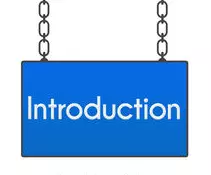
The amount and type of background material depend on the goal and topic of your essay.
You may need to provide definitions or an overview of the problem you discuss in the essay.
The background information in an essay will depend on the topic.
The background information in an essay on a scientific test may include test parameters, test objectives, test site conditions, sample kinds, sample size, and other background material.
If your essay is about COVID-19, your background information may touch on diverse points. These may include what kind of virus it is, its origins, and how many countries it has affected.
It may also include how many people have contracted it, and how it is transmitted from one person to another, among other things.
People Also Read: Essay Writing Titles: Being Creative Without Topic Generators
How to Write Background Information in an Essay
The key to writing background information in an essay is to master the art of the introduction. Grabbing the reader’s attention at the beginning allows you to include the information they need to comprehend your work.
The first paragraph/section of an essay is the introduction, and it is critical to creating an excellent paper. The introduction helps you begin the essay by grabbing the reader’s attention.
Then, you provide background information plus map out the core topic, direction, and objective of your essay.
Usually, an excellent introduction starts with a discussion about the essay’s topic. After that, you move on to the specific ideas you will explore in the body.
How do you Write the Introduction and include background information in an Essay?

Use an effective hook to make a solid first impression. This piques the curiosity and attention of readers, encouraging them to keep reading.
Provide background information about the main topic of the essay. It establishes a general framework for the paper by providing readers with the information they require before reading it.
It should start with broad concepts and then narrow down to the thesis (a single-focused idea).
Conclude with a concise thesis statement that indicates your motivation for writing, expresses the main idea/argument, and gives the body of the work a direction or outline.
The hook is the tool that captures attention and makes the readers want to keep reading. You can shape it as a question, an interesting fact or statistic, a quotation, or a story.
You can also use any other intriguing idea that piques readers’ curiosity and encourages them to continue reading.
Regardless of which option you choose, ensure the hook links to the essay’s topic in some way.
The background information sets the stage for the essay by offering a high-level summary of the topic. It introduces the broad topic(s) and eases the reader into the subject with general information.
Also, it may comprise concepts, facts, history, definitions, and other material that helps comprehend the specific information offered in the body.
It is critical to understand your audience and evaluate what readers may or may not know about the topic to provide relevant background information.
Besides, it enables you to offer readers the information they require before continuing to read the essay. So, presenting background information in the introduction acts as a link that connects the reader to the issue.
The length and depth of this bridge depend on how much information you believe the reader will need to comprehend the topic and realize why the difficulties you are looking at are essential.
Your thesis statement highlights the key idea or main argument and your motivation for writing the essay. You can also use it to outline the supporting ideas you explore in the body. It is usually the final sentence of the introduction.
People Also Read: Write an Essay about Family: From Introduction to Conclusion
Examples of Background Information in an Essay
1.”gettysburg address” abraham lincoln.
The hook in Abraham Lincoln’s “Gettysburg Address” was that the founding fathers believed that all men are created equal. Then he gave some background on the current state of the Civil War:

Now we are in the midst of a major civil war, which will determine whether that nation or any other nation so conceived and dedicated, can last for a long time.
And we have met on one of the war’s most important battlegrounds.
We’ve decided to devote a piece of the field as the last resting place for those who gave their life here so that this country could live. It is entirely appropriate for us to do so.
2. “Goodbye to All That” by Joan Didion
Notice how the introduction hooks your attention and then swiftly offers you some background information about Joan Didion’s life in this personal essay by Joan Didion:
The origins of things are easy to perceive, but the endings are more difficult to see. I can pinpoint when New York began for me now, with a clarity that makes the hairs on the back of my neck stand on end.
But I can’t pinpoint when it ended or cut through the ambiguities and second starts and broken resolves to the precise point on the page where the heroine is no longer as optimistic as she once was.
I was twenty when I first saw New York. It was summer, and I got off a DC-7 at the old Idlewild temporary terminal in a new dress.
It had seemed very smart in Sacramento but had already seemed less smart, even in the old Idle Wild temporary terminal.
The warm air smelled of mildew, and some instinct, programmed by all the movies I’d ever seen all the songs I’d ever heard sung, and all the stories I’d ever read about New York.

When not handling complex essays and academic writing tasks, Josh is busy advising students on how to pass assignments. In spare time, he loves playing football or walking with his dog around the park.
Related posts
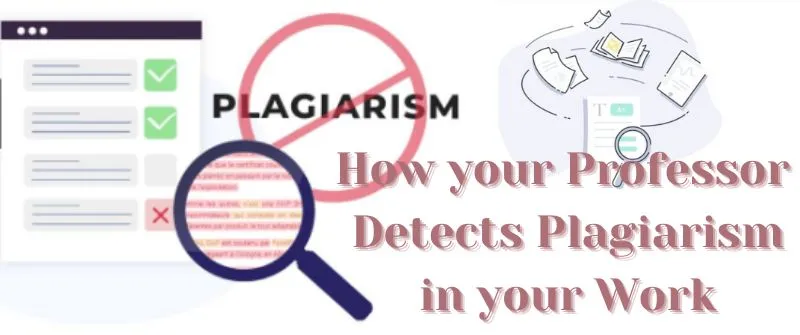
How your Professor Detects Plagiarism
Can Professors Detect Plagiarism: How do the Teachers Check

Is a Person a Primary Source
Is a Person a Primary or Secondary Source of Research?

essay research paper differences
Is an Essay a Research Paper: The Differences from Each

COMMENTS
Learn how to add background information to essays and papers. These background information examples will help you do it perfectly every time.
Step 1: Hook your reader. Step 2: Give background information. Step 3: Present your thesis statement. Step 4: Map your essay's structure. Step 5: Check and revise. More examples of essay introductions. Other interesting articles. Frequently asked questions about the essay introduction.
When writing the background information section of the essay, start with a broad introduction to your topic. Give a brief overview of the topic's subject matter and its significance. This will set the context of the essay and grab your readers' attention. 5. Give Historical Context if Applicable.
1 Purpose of the Research Paper Background. 2 How to Write a Background of the Study. 2.1 Starting with Preliminary Research for Broad Context. 2.2 Organize the Information. 2.2.1 Chronological. 2.2.2 Thematical. 2.2.3 Methodological. 2.3 Link to Your Research Question. 2.4 Avoid Plagiarism and Ensuring Proper Citation.
The second principle is that background information should appear towards the beginning of your essay. General background is presented in the introduction. If you have additional background to present, this information will usually come at the start of the body. The third principle is that everything in your essay should be relevant to the thesis.
The background of the study discusses your problem statement, rationale, and research questions. It links introduction to your research topic and ensures a logical flow of ideas. Thus, it helps readers understand your reasons for conducting the study. If playback doesn't begin shortly, try restarting your device.
In conclusion, the background in an essay plays a pivotal role in framing the narrative and ensuring a comprehensive understanding of the topic. It provides the necessary context, establishes relevance, and engages readers by sparking their interest. Just as a painter carefully selects the backdrop for a masterpiece, writers meticulously craft ...
In general, your introductions should contain the following elements: When you're writing an essay, it's helpful to think about what your reader needs to know in order to follow your argument. Your introduction should include enough information so that readers can understand the context for your thesis. For example, if you are analyzing ...
Focus on including all the important details but write concisely. Don't be ambiguous. Writing in a way that does not convey the message to the readers defeats the purpose of the background, so express yourself keeping in mind that the reader does not know your research intimately. Don't discuss unrelated themes.
The background information sets the stage for the essay by offering a high-level summary of the topic. It introduces the broad topic(s) and eases the reader into the subject with general information. Also, it may comprise concepts, facts, history, definitions, and other material that helps comprehend the specific information offered in the body.